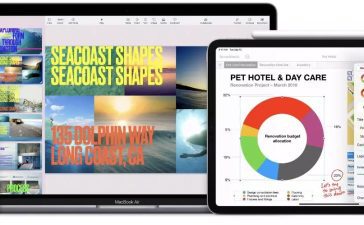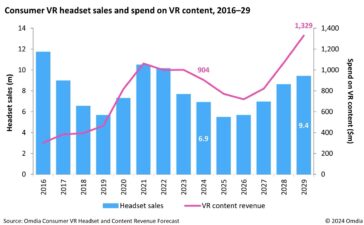Imagine a future Mac (laptop or desktop) that doesn’t have a physical monitor but uses a “virtual desktop” with the rumored “Apple Glasses” instead. Apple has filed for a patent (number 20210096638) for “augmented devices” that hints at such a reality.
In the patent filing, Apple says that electronic devices (desktops, laptops, speakers with a touch screen, smart watches, monitors) could use additional devices to supplement the input and output capabilities of an electronic device.
For example, you could connect a larger monitor to a laptop or use a head-mounted device (HMD) — the rumored “Apple Glasses” — to view a virtual screen corresponding to a laptop’s output (e.g., a virtual desktop).
However, Apple says that existing techniques that use one device to supplement the output or input capabilities of another device may be limited with respect to capability, usability, or efficiency and “generally may not provide user experiences that sufficiently augment the input and output capabilities of those electronic devices.” Apple wants to change this.
In fact, Apple is even considering the idea of its Apple Glasses being able to “conjure up” an entire Mac laptop or desktop with a virtual keyboard and more. (I’m assuming it would only recreate a virtual version of a computer for which you had a serial number. I can’t imagine Apple giving away free, even if non-physical, Macs.)
Here’s the summary of the invention: “Implementations use a first device (e.g., an HMD) to provide a CGR environment that augments the input and output capabilities of a second device, e.g., a laptop, smart speaker, etc. In some implementations, the first device communicates with a second device in its proximate physical environment to exchange input or output data. For example, an HMD may capture an image of a physical environment that includes a laptop. The HMD may detect the laptop, send a request the laptop’s content, receive content from the laptop (e.g., the content that the laptop is currently displaying and additional content), identify the location of the laptop, and display a virtual object with the received content in the CGR environment on or near the laptop. The size, shape, orientation, or position of the virtual object (e.g., a virtual monitor or monitor extension) may also be configured to provide a better user experience.”





